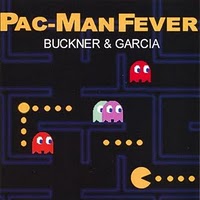 It all started with the video junkie smash single, “Pac-Man Fever,” probably the most stirring celebration of hitting rock bottom since the Velvet Underground’s “Heroin,” and blossomed into this full length cash in. You can take Pac-Man Fever as mere novelty, or read between the 8-bit lines for the real story. Check out the chilling “to a Centipede,” as the protagonist’s emotionless voice warns “don’t try hiding behind the mushrooms… I see you” like a calculating serial-killer, the shell-shocked pilot in a kill or be killed battle at the heart of “Defender,” or last humanoid on Earth “Goin’ Berzerk” as an ever-increasing wave of robots and Evil Otto close in. All the pressure comes to a boil in the complex set of dance floor directives, “Do the Donkey Kong,” one unrelenting amphetamine rush of a track. Pac-Man Fever stands as a one of a kind archive of a long lost age that will never return, as wood-paneled consoles rot in the back of pizza parlors while the youth of today live out their homicidal fantasies at home, their hot-pocket stained faces permanently glued to X-Boxes and Wiis. –Ben
It all started with the video junkie smash single, “Pac-Man Fever,” probably the most stirring celebration of hitting rock bottom since the Velvet Underground’s “Heroin,” and blossomed into this full length cash in. You can take Pac-Man Fever as mere novelty, or read between the 8-bit lines for the real story. Check out the chilling “to a Centipede,” as the protagonist’s emotionless voice warns “don’t try hiding behind the mushrooms… I see you” like a calculating serial-killer, the shell-shocked pilot in a kill or be killed battle at the heart of “Defender,” or last humanoid on Earth “Goin’ Berzerk” as an ever-increasing wave of robots and Evil Otto close in. All the pressure comes to a boil in the complex set of dance floor directives, “Do the Donkey Kong,” one unrelenting amphetamine rush of a track. Pac-Man Fever stands as a one of a kind archive of a long lost age that will never return, as wood-paneled consoles rot in the back of pizza parlors while the youth of today live out their homicidal fantasies at home, their hot-pocket stained faces permanently glued to X-Boxes and Wiis. –Ben
Jive Time Turntable
Kiss “Hotter Than Hell” (1977)
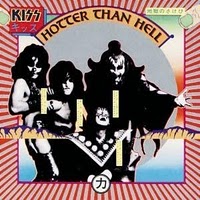 Even though I was an impressionable kid smack dab in the middle of the ’70s I was a late comer to Kiss. It’s long, dumb story, but when I finally did come around it was Kiss’ second album, “Hotter Than Hell,” that turned me on. Specifically, the track “Parasite.” It completely did me in… it’s start/stop sing-a-long lurch… yeah, just my style. The genius, beyond “Hotter Than Hell” obviously being Kiss, is the entire record is solid American mid ’70s Rock and Roll, a bit sing-a-long glam and a little stoned… yep, just right… and that ’70s rock record production, was it engineered (is it the compression?) to feel a tad quiet so you had to turn it up way too loud? –Nipper
Even though I was an impressionable kid smack dab in the middle of the ’70s I was a late comer to Kiss. It’s long, dumb story, but when I finally did come around it was Kiss’ second album, “Hotter Than Hell,” that turned me on. Specifically, the track “Parasite.” It completely did me in… it’s start/stop sing-a-long lurch… yeah, just my style. The genius, beyond “Hotter Than Hell” obviously being Kiss, is the entire record is solid American mid ’70s Rock and Roll, a bit sing-a-long glam and a little stoned… yep, just right… and that ’70s rock record production, was it engineered (is it the compression?) to feel a tad quiet so you had to turn it up way too loud? –Nipper
Booker T & The MG’s “McLemore Avenue” (1970)
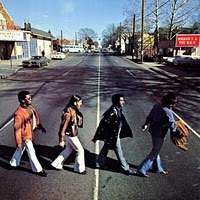 Likely my favorite of the “Abbey Road” concept cover albums, this is a crisp, tight and funky interpretation of all the classics we know and love, with perfect bubbly organ and bright guitar tone. Booker T and the band actually seem to hold back a bit on most of the numbers, arranging nearly all of the “Abbey Road” songs into three medleys, and one version of Harrison’s “Something”, really only breaking out the dirty soul for moments of “The End” and “Come Together”. And being that this was recorded in 1970, they had to test out some of the new technology and record a Moog for the intro of “Here Comes The Sun”. So what makes this any better than the glut of Beatles covers that ran rampant then and now? Well, for one thing, Booker T & the MG’s are one of America’s most famous “backing bands”, and this time, since there’s no vocalist to feature, the songs can really stand on their own. No wankery solos or bombast are needed to create attention, this is a soulful and understated interpretation. Steve Cropper can say more with three notes than most can with thirty, and on songs like those found on “Abbey Road”, he can say what he means effortlessly, and engagingly. There’s a lot of space in between the notes, and when you’re as tight as these guys, you get to hear it and appreciate it all. –Cameron
Likely my favorite of the “Abbey Road” concept cover albums, this is a crisp, tight and funky interpretation of all the classics we know and love, with perfect bubbly organ and bright guitar tone. Booker T and the band actually seem to hold back a bit on most of the numbers, arranging nearly all of the “Abbey Road” songs into three medleys, and one version of Harrison’s “Something”, really only breaking out the dirty soul for moments of “The End” and “Come Together”. And being that this was recorded in 1970, they had to test out some of the new technology and record a Moog for the intro of “Here Comes The Sun”. So what makes this any better than the glut of Beatles covers that ran rampant then and now? Well, for one thing, Booker T & the MG’s are one of America’s most famous “backing bands”, and this time, since there’s no vocalist to feature, the songs can really stand on their own. No wankery solos or bombast are needed to create attention, this is a soulful and understated interpretation. Steve Cropper can say more with three notes than most can with thirty, and on songs like those found on “Abbey Road”, he can say what he means effortlessly, and engagingly. There’s a lot of space in between the notes, and when you’re as tight as these guys, you get to hear it and appreciate it all. –Cameron
Zapp “Zapp” (1980)
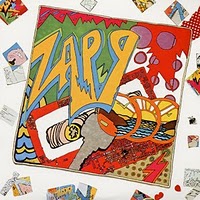 While this artist and LP have a definate P-Funk influence, Roger Troutman is no less a brilliant musician himself. The same way James Brown took the African-American experience (like Hendrix, Sly Stone & others) to a different level, so did Roger & Zapp with “More Bounce To The Ounce.” It was, and is, like nothing ever heard before. Just like Larry Graham’s bass changed the face of R/B and funk, so did “More Bounce.” The whole nine minutes of the song is irresistable. It opened the door for street funk, which gave way to another type of “funk”: Hip-Hop and Rap. This LP is a defining moment in Black music. Not only is Roger a master at the “talk box,” his deep blues committments come shining through. Per groove, Zapp offers the most bounce to the ounce!
While this artist and LP have a definate P-Funk influence, Roger Troutman is no less a brilliant musician himself. The same way James Brown took the African-American experience (like Hendrix, Sly Stone & others) to a different level, so did Roger & Zapp with “More Bounce To The Ounce.” It was, and is, like nothing ever heard before. Just like Larry Graham’s bass changed the face of R/B and funk, so did “More Bounce.” The whole nine minutes of the song is irresistable. It opened the door for street funk, which gave way to another type of “funk”: Hip-Hop and Rap. This LP is a defining moment in Black music. Not only is Roger a master at the “talk box,” his deep blues committments come shining through. Per groove, Zapp offers the most bounce to the ounce!
Crazy Horse “Crazy Horse” (1971)
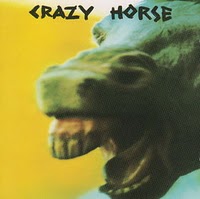 An oft-forgotten little gem of the early 70s, this album is in some respects better than you’d expect a Crazy Horse album to be; but in hindsight, a really strong album by Crazy Horse without Neil Young makes sense. They had all the ingredients necessary for a great band, which is why Young’s albums with them rarely relegate them simply to backing status. The songs are solid, the performances predictably lazy without sounding lifeless, and the group shows a surprising amount of variety both in terms of style and in terms of dynamics. You may be surprised by the number of songs on here that you’ve already heard covered with varying levels of success. Highly recommended to those who own the Neil Young albums, and heartily recommended to fans of early 70s rock in general. –Will
An oft-forgotten little gem of the early 70s, this album is in some respects better than you’d expect a Crazy Horse album to be; but in hindsight, a really strong album by Crazy Horse without Neil Young makes sense. They had all the ingredients necessary for a great band, which is why Young’s albums with them rarely relegate them simply to backing status. The songs are solid, the performances predictably lazy without sounding lifeless, and the group shows a surprising amount of variety both in terms of style and in terms of dynamics. You may be surprised by the number of songs on here that you’ve already heard covered with varying levels of success. Highly recommended to those who own the Neil Young albums, and heartily recommended to fans of early 70s rock in general. –Will
Flamin’ Groovies “Flamingo” (1970)
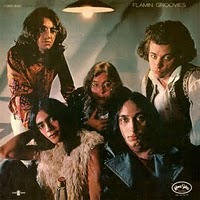 We all know progressive rock. But who among us knows of the superior pleasures of regressive rock? Only those who listen to the likes of the Flamin’ Groovies, a cult band in the truest sense, who sound out of time and place whenever they’re played, because they’re both backward and forward looking, trapped in a netherworld of bandwagon jumping and hipster snobbery. Yet sometimes they seem to nail the world down in just the right place with their no-frills garage rock and oddly innocent decadence. Flamingo is the one that does it for me. More consistent than Teenage Head (their other near-masterpiece), this one is an almost relentless 10-track barnburner. It’s a drunkard’s record. A brawler’s record. The record waiting for that summer’s night cruise in the Dodge Challenger. In a just world, “Second Cousin” and “She’s Falling Apart” would be classics. “Road House” sounds like The Who in ’65 crossed with The Gun Club in ’80. Join the cult. Go on, drink it, it’s good for you. –Will
We all know progressive rock. But who among us knows of the superior pleasures of regressive rock? Only those who listen to the likes of the Flamin’ Groovies, a cult band in the truest sense, who sound out of time and place whenever they’re played, because they’re both backward and forward looking, trapped in a netherworld of bandwagon jumping and hipster snobbery. Yet sometimes they seem to nail the world down in just the right place with their no-frills garage rock and oddly innocent decadence. Flamingo is the one that does it for me. More consistent than Teenage Head (their other near-masterpiece), this one is an almost relentless 10-track barnburner. It’s a drunkard’s record. A brawler’s record. The record waiting for that summer’s night cruise in the Dodge Challenger. In a just world, “Second Cousin” and “She’s Falling Apart” would be classics. “Road House” sounds like The Who in ’65 crossed with The Gun Club in ’80. Join the cult. Go on, drink it, it’s good for you. –Will
Cheap Trick “Cheap Trick” (1977)
 One of the best albums and greatest debuts of all time! “Cheap Trick” must have sounded light years ahead of its time when it arrived in 1977. Arena rock and power pop meet glam and punk with a trashy, live, unpolished sound. Too pop to be punk and too punk to be considered pop, the record tanked in ’77, but listening to it now it’s hard to imagine how this record wasn’t an instant hit. A few years later Cheap Trick would fill stadiums but musically they never topped this debut. Highlights include the glam “ELO Kiddies,” the dark and delightfully perverted “Daddy Should Have Stayed In High School,” the catchiest song ever written about the IRS, “Taxman Mr Thief,” and the infectious “Oh Candy.” Power pop perfection! –David
One of the best albums and greatest debuts of all time! “Cheap Trick” must have sounded light years ahead of its time when it arrived in 1977. Arena rock and power pop meet glam and punk with a trashy, live, unpolished sound. Too pop to be punk and too punk to be considered pop, the record tanked in ’77, but listening to it now it’s hard to imagine how this record wasn’t an instant hit. A few years later Cheap Trick would fill stadiums but musically they never topped this debut. Highlights include the glam “ELO Kiddies,” the dark and delightfully perverted “Daddy Should Have Stayed In High School,” the catchiest song ever written about the IRS, “Taxman Mr Thief,” and the infectious “Oh Candy.” Power pop perfection! –David
Arthur Brown “The Crazy World Of Arthur Brown” (1968)
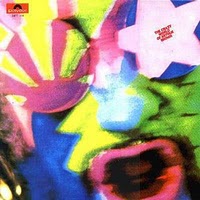 Occasionally, screaming out of two scant seconds of dead FM radio silence, would be “I AM THE GOD OF HELL FIRE, and I give you FIRE!” Terrified, before the first phrase of the song’s riff was finished, I’d jump up and turn off the radio. Um, it WAS the mid ’70s and, being a kid easily creeped out, I truly believed Arthur Brown WAS the god of hell fire! He, and his big CREEPY voice… it’s possessing as it IS possessed…, was coming after ME! It haunted me, if ever I thought about evil things (um, clowns mostly) that song, that VOICE, provided the soundtrack. Eventually, I got over being honestly freaked out, it was just theatrics (RIGHT?!). Now “The Crazy World Of Arthur Brown” is one of my favorite ’60s albums. The A side is a wicked psychedelic concerto of swirling Hammond organ, thundering drums and Mr. Browns big BAD voice… which gives me shivers, still. –Nipper
Occasionally, screaming out of two scant seconds of dead FM radio silence, would be “I AM THE GOD OF HELL FIRE, and I give you FIRE!” Terrified, before the first phrase of the song’s riff was finished, I’d jump up and turn off the radio. Um, it WAS the mid ’70s and, being a kid easily creeped out, I truly believed Arthur Brown WAS the god of hell fire! He, and his big CREEPY voice… it’s possessing as it IS possessed…, was coming after ME! It haunted me, if ever I thought about evil things (um, clowns mostly) that song, that VOICE, provided the soundtrack. Eventually, I got over being honestly freaked out, it was just theatrics (RIGHT?!). Now “The Crazy World Of Arthur Brown” is one of my favorite ’60s albums. The A side is a wicked psychedelic concerto of swirling Hammond organ, thundering drums and Mr. Browns big BAD voice… which gives me shivers, still. –Nipper
Sly and the Family Stone “There’s a Riot Goin’ On” (1971)
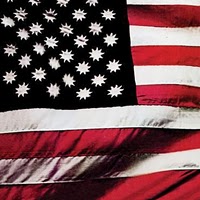 The greatest funk album ever recorded, which puts it way up there for best album, period. It’s done more than any other single pop album to change the way I listen to music, and even two years after first hearing it (yeah, I came to the riot late), I’m in awe of how it works – after all, it really shouldn’t, it’s simply too fucked up. Insular, decadent to the death, angry to exhaustion, with a bass guitar so upfront it’s unlistenable for quite some time, until you realize this is part of the album’s statement of purpose: all the crap that comes out of suburban subwoofers owes a debt to the dank, dirty vibe of the bass on this album. –Will
The greatest funk album ever recorded, which puts it way up there for best album, period. It’s done more than any other single pop album to change the way I listen to music, and even two years after first hearing it (yeah, I came to the riot late), I’m in awe of how it works – after all, it really shouldn’t, it’s simply too fucked up. Insular, decadent to the death, angry to exhaustion, with a bass guitar so upfront it’s unlistenable for quite some time, until you realize this is part of the album’s statement of purpose: all the crap that comes out of suburban subwoofers owes a debt to the dank, dirty vibe of the bass on this album. –Will
X “Under The Big Black Sun” (1982)
 A record that sums up Americana as well as any other. “Under The Big Black Sun” is proof that X was as good of a country band as they were a punk band. Rockin’, rollicking, dissonant and dizzying, this record is a forty-five minute bender. Bookended by “The Hungry Wolf” (an superblast of syncopated yell along) and “The Have Nots” (possibly the best drinking song ever), this is the soundtrack to an unencumbered night out. –Cameron
A record that sums up Americana as well as any other. “Under The Big Black Sun” is proof that X was as good of a country band as they were a punk band. Rockin’, rollicking, dissonant and dizzying, this record is a forty-five minute bender. Bookended by “The Hungry Wolf” (an superblast of syncopated yell along) and “The Have Nots” (possibly the best drinking song ever), this is the soundtrack to an unencumbered night out. –Cameron
Charlie Daniels Band “Fire On The Mountian” (1974)
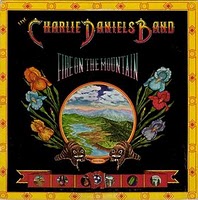 THIS is the absolute Charlie Daniels Band! “Fire On The Mountain” is a foot stompin’, beer drinkin’, dosey-doin’ hogwallowin’, just plain ol’ fun album to listen to! Shucky darn and slop the chickens, you’ll be in HAWG HEAVEN! –Fred
THIS is the absolute Charlie Daniels Band! “Fire On The Mountain” is a foot stompin’, beer drinkin’, dosey-doin’ hogwallowin’, just plain ol’ fun album to listen to! Shucky darn and slop the chickens, you’ll be in HAWG HEAVEN! –Fred
The B-52’s “The B-52’s” (1979)
 The Ultimate Party Album! An abundance of hooks fill every track, but it wouldn’t be that good if it weren’t for the vocals. Spoken, sung, screeched, wobbled, it’s all marvelous. And the yokoisms! And the lyrics! And the cover! New wave new wave new wave! –Tuukka
The Ultimate Party Album! An abundance of hooks fill every track, but it wouldn’t be that good if it weren’t for the vocals. Spoken, sung, screeched, wobbled, it’s all marvelous. And the yokoisms! And the lyrics! And the cover! New wave new wave new wave! –Tuukka


